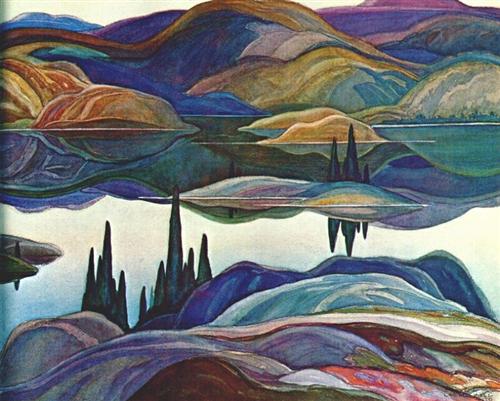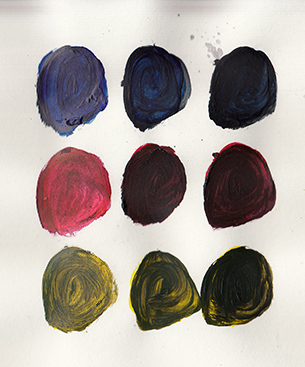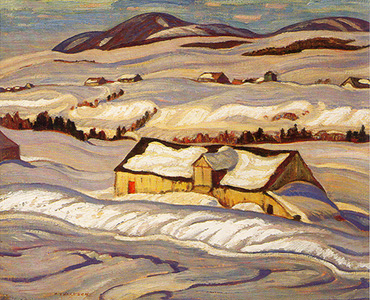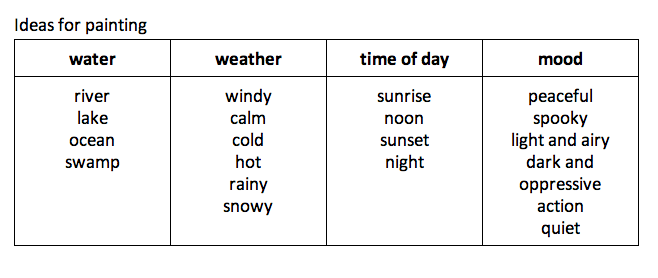Artists use light and dark colors in their pictures.
The lightness and the darkness of a color is its value.
Colors that have light values are tints.
This painting by A.Y. Jackson, a Canadian artist, has many light values.
What tints did he use to show a winter morning?
What colors did he use for shadows?

Franklin Carmichael, Mirror Lake, 1929.
A gradual change in values is called shadowing.
A very great difference in values is called contrast.
Contrast makes the parts of the painting easy to see.
Practice – Mixing Using the Dot System
1. Mix 3 tints. (Begin with white)

Learn to mix tints. Begin with white paint. Add dots of color. Mix the paint directly on the paper. What happens when you add more color to the paint?
2. Mix 3 shades. (Begin with any color)

Learn to mix shades. Begin with a color of your choice. Add dots of black to the color. Mix the paint. What happens when you add more black to the color?
3. Wash, Wipe and Blot your brush before you change colors.
4. PUT YOUR PRACTICE PAINTING ON THE DRYING RACK AND BEGIN THE PROJECT.


